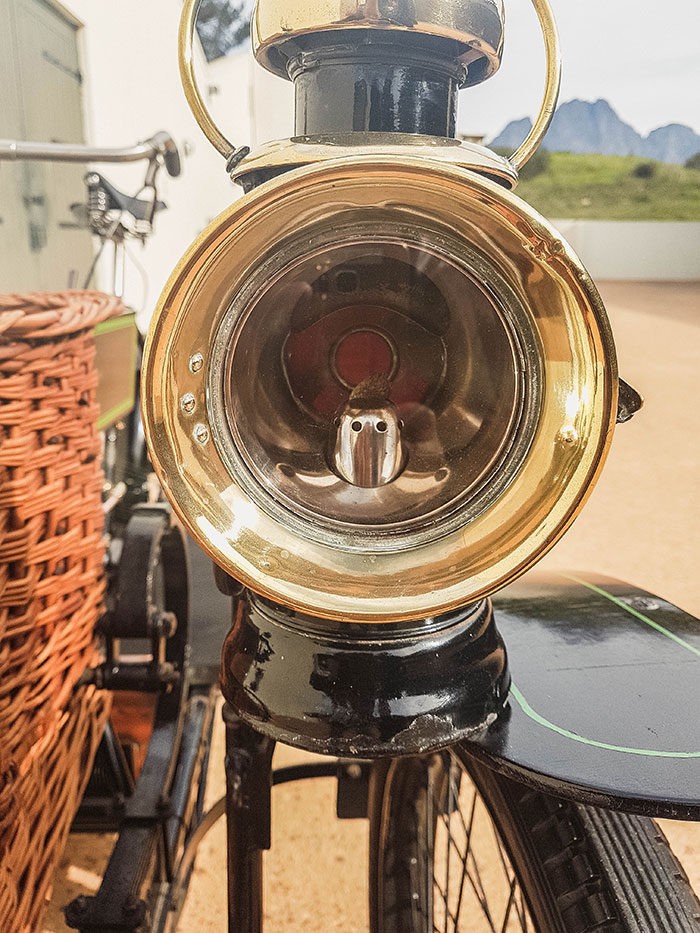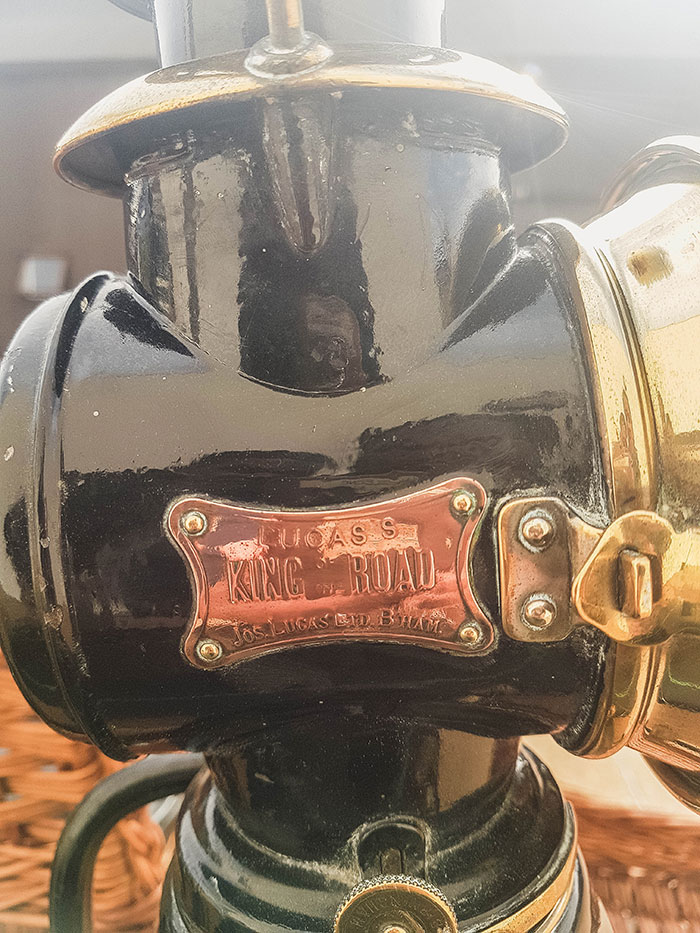
28 Jun Memorabilia: Carbide lamps
FMM Assistant Curator Cheslynne Ruiters takes a look at the stories behind some of the items in FMM’s collection of memorabilia and artefacts. This month he throws some light on the King of the Road…
Carbide lamps, or acetylene gas lamps, are simple lamps that produce and burn acetylene that is created by the reaction of calcium carbide with water. In days gone by, acetylene gas lamps were used to illuminate buildings, act as lighthouse beacons and as headlights on cars and motorcycles. Vehicle headlamps were officially introduced during the 1880s and were based on acetylene and oil, similar to the old gas lamps. In essence, these two substances were used to fuel the headlamps but due to the high cost of both oil and acetylene, improving the existing system was almost impossible. Although they were often praised for their resistance to currents of air and tough weather conditions such as rain and snow, they were soon replaced by electric lamps. The first electric headlamp was produced by the Electric Vehicle Company based in Hartford, Connecticut in 1898, but in this article we are going to look at one of the more famous and commonly known headlamps, the Lucas King of the Road.
Joseph Lucas was born in Birmingham, England in 1834 and possessed natural business acumen, beginning in the early 1860s as a dealer in paraffin oil for domestic lamps and other products. In 1875, he opened a small workshop with five employees. The early product range included ship’s lamps and in 1878 the first cycle lamp appeared on a Penny Farthing. In 1882, Joseph formed a private partnership with his son Harry, trading under the title of Joseph Lucas & Son.
Business expanded dramatically in the bicycle boom of the time. Harry Lucas designed a hub lamp for use on a bicycle in 1879 and named the oil lamp ‘King of the Road’. Lucas was perfectly positioned to take advantage of the expanding motor vehicle market, which was stimulated by a Parliamentary Act in 1903 that raised the speed limit above walking pace, making the use of cars more attractive. A new factory was built that later developed into the iconic Great King Street premises for the Lucas Electrical business in Birmingham. Joseph died in 1902 and was succeeded by Harry as chairman.
However, Lucas did not use the King of the Road epithet for every lamp manufactured. They used this name on only their most prestigious and usually highest-priced lamps and goods. This naming format would last until the 1920s when the ‘King of the Road’ wording was pressed into the outer edge of the small ‘lion and torch’ button motifs that frequently decorated the tops of both bicycle and vehicle lamps. The public were encouraged by Lucas to refer to every Lucas lamp as a King of the Road, but strictly speaking this is quite wrong, as most lamps throughout the 20th century possessed a name, a number, or both. However, the name would come to be associated with the manufactured products of Lucas companies into the present day.
However, Lucas became defunct in 1996 when it merged with American Varity Corporation. The King of the Road name returned in 2013 as Lucas Electrical reintroduced a range of bicycle lighting to the UK. The name was reserved for the Lucas Electrical’s premium LED bike lights.




